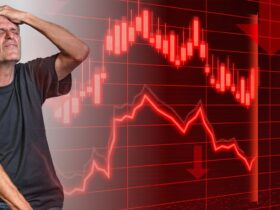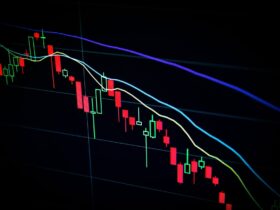It’s been a tough few weeks for global stock markets in 2022, with the Russia-Ukraine Crisis and inflation playing a large part in the sell-off. Many investors wonder if it’s time to sell their stocks and take their money elsewhere. Or is this an opportunity to buy stocks at a discount? In this blog post, I will explore the effects of the war on the stock market based on past history and share what I’ll be doing with my portfolio during this uncertain environment.
Note: If you are interested in finding out the inflation’s impact on stock returns, please visit Investopedia, where they provide great information.
Let’s first understand the two types of the stock market crash.
There is an old saying on Wall Street that bad certainty is better than uncertainty.
What does that mean?
It means that investors would rather know how bad things are and anticipate what will happen next rather than be in a state of fear and speculation as to what may happen. While this may not seem like it makes sense at first, it does when you consider how difficult it is to plan for the future if you don’t know what’s going on at the moment.
This is particularly relevant when the market is selling off, and you want to understand why things may be happening as they do. In these situations, it can be helpful to understand the two types of stock market crashes: “bad certainty” and “uncertainty”.
The COVID-19 is the perfect example of “bad certainty”.
If you remember, during 2019, the US economy was doing great until the coronavirus came, and all hell broke loose. Unemployment went up, businesses were shut down, people started losing their jobs, and most importantly, there was the uncertainty of how long this situation would go on.
Any certainty would have been good in such a situation, even if it meant a colossal drop in stock prices, leading to a stock market crash. And that is precisely what happened – after falling for two days, the markets saw a sudden rebound from March 23rd onwards.
Here’s the thing, when a stock market crash happens, there is no longer any doubt about where we are or where we’re headed. The stock market has reached its bottom, and all of the uncertainty that was present before has disappeared.
The US bear market of 2007-2009 is the perfect example of “uncertainty” leading to a major stock market crash.
The US bear market of 2007–2009 was a 17-month bear market that lasted from October 9th, 2007 to March 9th, 2009. During the period, there was a lot of speculation and ambiguity in the economy, leading to widespread panic. In such conditions, people prefer to sell their stocks, leading to a further drop in prices.
Let’s take a look at history before we piece the puzzle together.
What the past history indicates?
The Twitter post below shows how the global indices reacted to some of the most recent major conflicts:
As you can see, the stock markets weakened in the months leading up to each of these conflicts. However, they all eventually recovered and even made new highs.
Now that we know how stock markets have reacted to wars in the past. Let’s look at what’s happening now.
Unfortunately, the Russia-Ukraine crisis is still unfolding, and it’s too early to tell what the long-term effects will be. However, some economists predict that this could be the start of a new Cold War. If that’s the case, we can label this as uncertainty and expect the stock markets to weaken.
After piecing the puzzle, I came to a conclusion.
Having gone through the sequence of events carefully, I would say that this is a bad certainty to the stock market as I expect less turbulence in the coming days.
The US stock market has always been unpredictable, and this time will be no different. I certainly don’t have any magic formula for pricing in geopolitical risks. Still, based on the past history, I think it is reasonable to assume that this will have at least a 15% impact on stock prices (in terms of value) based on the chart in the coming month.
My Approach?
Given the current situation and all of the present factors, I believe the bottom could be in for the stock market. I would wait for a confirmed bottom (depending on the news) before investing in stocks again.
So long as there aren’t too many surprises at once, I think it’s reasonable for me to stay invested by dollar-cost averaging in the market in the following month, adding the position to my strongest stock conviction. Until then, I would follow closely and re-evaluate my stock position if I see signs of uncertainty.
Key Takeaway
- Stock markets usually weaken as wars approach.
- Recover and make new highs after a war ends.
- Russia-Ukraine crisis is still unfolding, and it’s too early to tell the effects.
- Based on past history, expect at least a 15% impact on stock prices in the coming month.
- Adopting Dollar-Cost averaging (Here’s a guide on how you can adopt dollar-cost averaging).
Nothing is certain in life and especially not in geopolitical life. Hopefully, this guide has given you a reasonable measure in the stock market to answer the uncertainty of geopolitics. As with everything else in life, the main thing when investing is to keep it simple and do your research.
What do you think? Do you think the stock market has bottomed out? Or is this just a temporary relief rally? Please let me know your thoughts in the comments below!
Disclaimer: I’m not a financial advisor and cannot legally provide financial advice. I have done this study purely out of personal interest in the financial world. Any risk you take in investing money should be taken as just that, a risk. Please do your own research and consult with qualified professional points of view before investing your hard-earned money.















1 Comment
View Comments